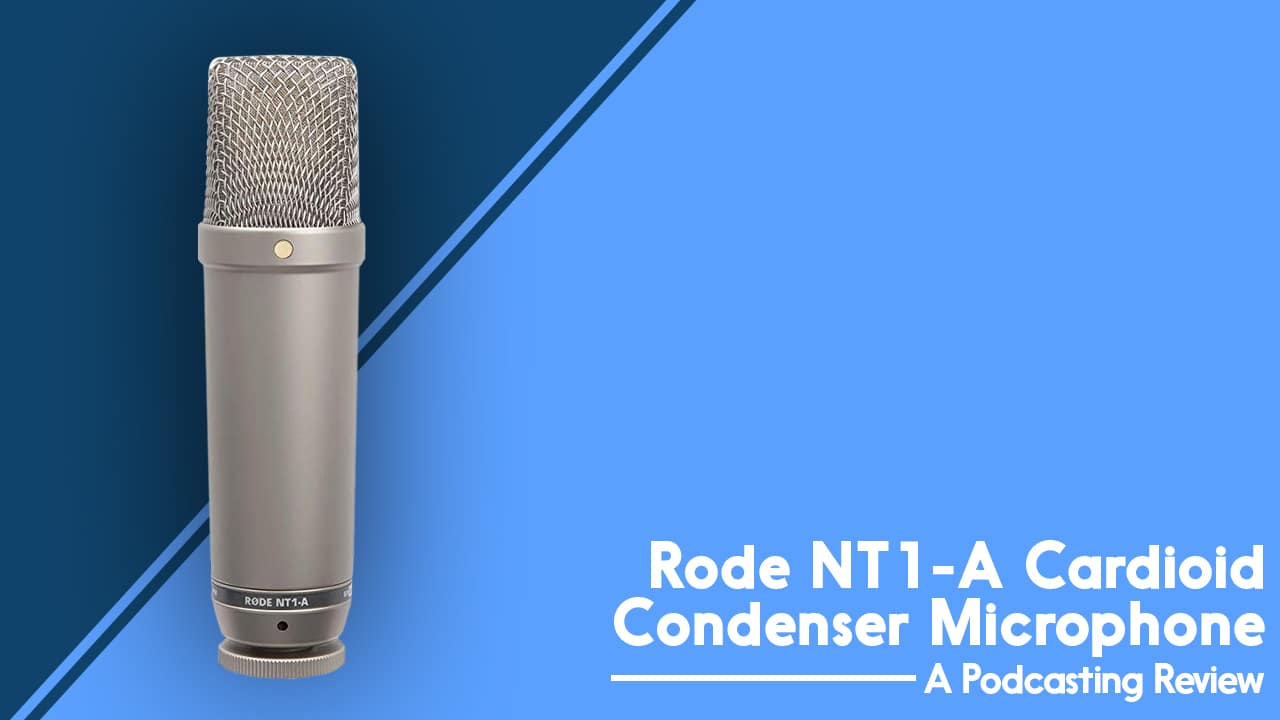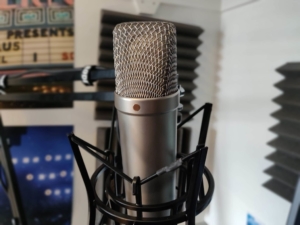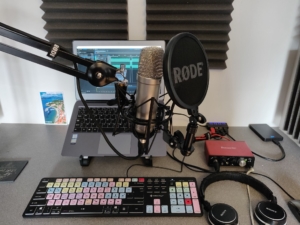Rode NT1-A Microphone Review – How Much Bang Can You Get For Your Buck?

In today’s deep-dive Rode NT1-A review, I want to cover this utter workhorse of a microphone. It’s one of those mics you’ll find just about anywhere, in music, radio, and voice over studios around the world.
Not only that, but it’s fast becoming a top choice for podcasters looking to start recording with their first condenser mic. Just look at our podcasting gear stats survey from early 2020 which showed it’s one of the most popular podcasting microphones around.
Remember, we’ve covered just about all of the competition too, so click below to look at the alternatives:
But, for now, interested to hear if the Rode NT1-A is for you? Let’s look into it!
 Cost of the Rode NT1-A
Cost of the Rode NT1-A
A condenser microphone uses a power supply, or pre-amp, to run. This contributes to them having a far more dynamic and rich sound than the majority of USB mics out there.
The downside is the extra cost. A new pre-amp cost me £100/$130, which is not an insignificant amount of money. Add on a microphone arm to cradle your new baby, and you could be looking at £300/$390 to get a complete setup.
But, when you consider that the ever-popular Shure SM7B costs more than all the above put together, the pricing looks very attractive indeed. The bundle I purchased came with a microphone cradle, pop shield, and XLR cable for £114. Value is the name of the game here, and your pennies certainly go a long way.
How Does It Sound?
But enough about the finances, how does it sound? It’s rich, accurate, and very forgiving. Warmth abounds, but the dynamic range means you won’t lose the highest pitched consonants amid the lowest vowels. In fact the NT1-A’s dynamic range is the same as your own fleshy head-mounted microphones: 20HZ – 20KHz.
You’ll need a fair amount of gain to get your levels right, so finding a well-tested pre-amp is a must. I opted for the tiny Focusrite Scarlett Solo. It has more than enough juice to get the job done, and doesn’t take up too much real estate on the desk. Which is certainly a plus when the hefty cradle and microphone are hovering above it all. This is not a microphone for field recordings.
Using the Rode NT1-A
With a good setup the Rode NT1-A is a breeze to use. Simply find a good posture, put the mic a few inches from your mouth, and blabber on to your heart’s content. Make sure the gold button on the mic’s collar is facing you, and you’ll be talking into the right opening.
Some microphones require real ongoing attention to your vocal technique. The Rode NT1-A is not one of them. Of course, if you drift too far away or begin bellowing at the poor thing then you’ll have some pretty awful audio. But if you’re not up to speed on the basics of vocal recording, then it might be better to get your eye in on a cheaper USB alternative like the Samson Q2U.
It’s also worth noting that a bit of light post-processing will go a long way in buffing your raw audio.
 Rode NT1-A Review Summary
Rode NT1-A Review Summary
Ultimately the Rode NT1-A will be what you make of it. It’s a simple high quality microphone that will do the job in a rough and ready setup. But, if you spend some time setting up a bit of sound dampening and get some good positioning, the sky really is the limit. A ten year warranty doesn’t hurt either…
If you’re making your first foray into condenser microphones then the Rode NT1-A is an excellent place to start. I’ve spent many hours in radio and recording studios, places where the quality of the NT1-A would be right at home. Especially when you get your recording environment right.
This microphone is proof positive that you don’t have to break the bank to get great audio.
Looking to grab your first microphone? Or just making a switch?
Not sure if the Rode NT1-A is for you? Check out our round-up of the best podcasting microphones out there for some more options on this front.
And if you’re looking for some more tailored help navigating the murky waters of podcasting equipment, take a look at Podcraft Academy. That’s where you’ll get access to our regular live Q&A sessions, as well as our courses which focus on things like monetisation, voice training, and promotion, as well as the audio gear stuff. It would be great to see you there!
 Cost of the Rode NT1-A
Cost of the Rode NT1-A Rode NT1-A Review Summary
Rode NT1-A Review Summary